Customary practices
Customary practices that are detrimental to the health of children
Female genital mutilation, forced marriages and child marriages are customary practices that are detrimental to the health of children.
Customary practices are defined as practices inherited from the past that are accepted and respected by the members of a community.
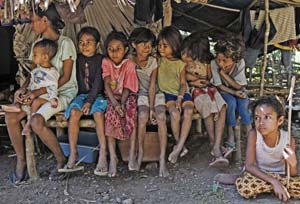 Such practices become damaging to the health of children when they harm their physical or mental health, and thus threaten their lives or their development. These practises then go against human rights.
Such practices become damaging to the health of children when they harm their physical or mental health, and thus threaten their lives or their development. These practises then go against human rights.
Several types of customary practices exist that have detrimental effects on children’s health. The most common are female genital mutilation, and the so-called forced, arranged and child marriages.
Female genital mutilation (FGM)
Definition
Also called female circumcision, FGM consists of the removal of part, or all of the external genitalia of a female, or of their mutilation in one way or other for cultural or other, non-therapeutic reasons.
Such practices are a violation of the rights of the child as they are commonly performed on girls aged 0-15 years.
The causes
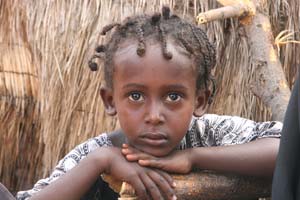 Such mutilations are performed for a number of reasons that can be religious, cultural or sanitary. Yet these inhumane and degrading practices are in reality a barbaric means to preserving young girls’ virginity.
Such mutilations are performed for a number of reasons that can be religious, cultural or sanitary. Yet these inhumane and degrading practices are in reality a barbaric means to preserving young girls’ virginity.
They are often considered as rites of passage into adulthood. The parents, in particular the mothers who themselves endured the same suffering and humiliation, feel compelled to subject their daughters to this ritual in order to ensure their social integration, and that of their entire family.
Refusing to undergo such rituals can be grounds for social exclusion of the girl, or even her entire family. In extreme cases, the girl might even be killed.
The consequences
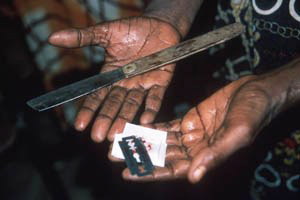 The conditions in which these methods are applied: precariousness, lack of hygiene, absence of medical staff and lack of anaesthesia, have a detrimental effect on the girls’ physical and psychological health. Thousands of little girls die every year as a result of health complications caused by mutilation, which expose them to them severe pain, infections and risk of internal bleeding.
The conditions in which these methods are applied: precariousness, lack of hygiene, absence of medical staff and lack of anaesthesia, have a detrimental effect on the girls’ physical and psychological health. Thousands of little girls die every year as a result of health complications caused by mutilation, which expose them to them severe pain, infections and risk of internal bleeding.
Moreover, studies have proven that genital mutilation of mothers has a negative impact on their infants who are at a much higher risk of death at birth.
Female genital mutilation in the world
It is currently estimated that over 130 million girls and women around the world have undergone female genital mutilation, and every year, three million girls are at risk of suffering the same fate.
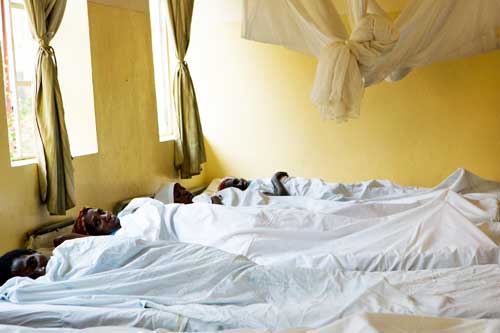
Female genital mutilation is mainly practised in Africa (in 28 African countries), with over 90 million circumcised girls and women, i.e. 1 in 3 women have to live with the consequences of this sexual mutilation.
FGM is also practised in Malaysia, Yemen and Indonesia, as well as in some ethnic groups in Central and South America. It even exists in developed countries, due to immigrant families that maintain their traditions.
Arranged, forced and child marriages
Definition
In some countries, arranged marriages are a cultural tradition whereby families choose a spouse for their children. It is very common that the young woman, or young man, is married without her/his consent. In such cases, the marriage is referred to as a forced marriage.
Forced marriage is a violation of human rights since it prevents individuals from freely owning their own body, and making decisions for their own future. This custom is, therefore, completely at odds with the principle of marriage in itself; that is, the consecration of the voluntary and freely consented union of two individuals. Young women are the most affected, but boys are also victims of such a practice.
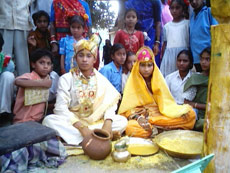
In general, forced marriages also fall within the category of the so-called “early marriages”, or “child marriages”. This means a forced union where one of the spouses is below 18 years of age.
Girls are the most affected: from a very young age, or from birth even, their families will choose a husband that they will marry as soon as they reach puberty and are able to have children.
The causes
In disadvantaged areas, deprived families view their child’s marriage as an economic strategy that will both help support the family and protect the child from poverty. In the more affluent developing countries, such marriages are intended to preserve and transmit traditions, and to strengthen ties among high-status families.
The impact on children’s health
Child marriages are a violation of the rights of the child, and in particular those of the girls who are robbed of the chance to enjoy their childhood, and who lack sufficient maturity and discernment to accept and understand such commitment.
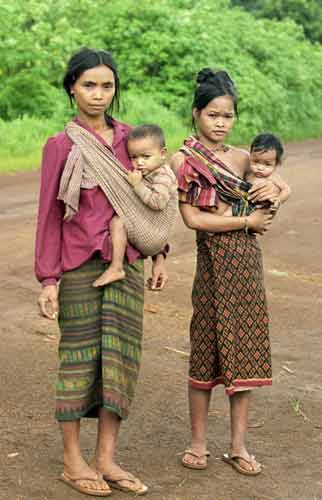
Child marriages have serious consequences on the health of girls who are not ready psychologically, and who do not fully comprehend the obligations and consequences that a marriage entails. Also, they are often raped during the wedding night, and endure sexual violence during subsequent encounters.
Moreover, these young girls are not equipped, neither mentally nor physically, to experience pregnancy and child birth. Many of them give birth prematurely, delivering children with reduced chances to survive. The long and arduous experience of giving birth can be fatal for both young mother and child.
Forced and child marriages in the world
Each year, millions of children are married against their will or without a real understanding of the consequences of their consent. Since the distinction between forced and arranged marriages is blurred, it is difficult to precisely determine the number of children, of girls in particular, who are forcibly married. However, whether arranged or forced, child marriages are a violation of the fundamental rights of the child.
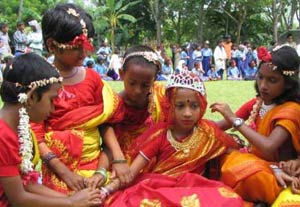 It was estimated in 2005 that in developing countries, over 65 million women (aged 20-24) had already been married before their 18th birthday. Over 30 million of these lived in South East Asia. In Nepal, 7% of girls were married before their tenth birthday.
It was estimated in 2005 that in developing countries, over 65 million women (aged 20-24) had already been married before their 18th birthday. Over 30 million of these lived in South East Asia. In Nepal, 7% of girls were married before their tenth birthday.
Moreover, each year, 14 million girls aged 14-19 become mothers as a result of family pressure that, despite the health risks, pushes them to have a child as soon as they are married. A fifteen year old girl is 5 times more likely to die during child birth than a woman of 25. Those that die can suffer serious complications.

